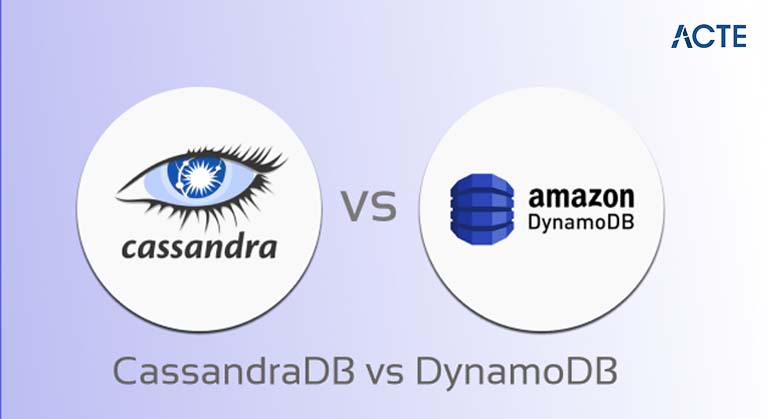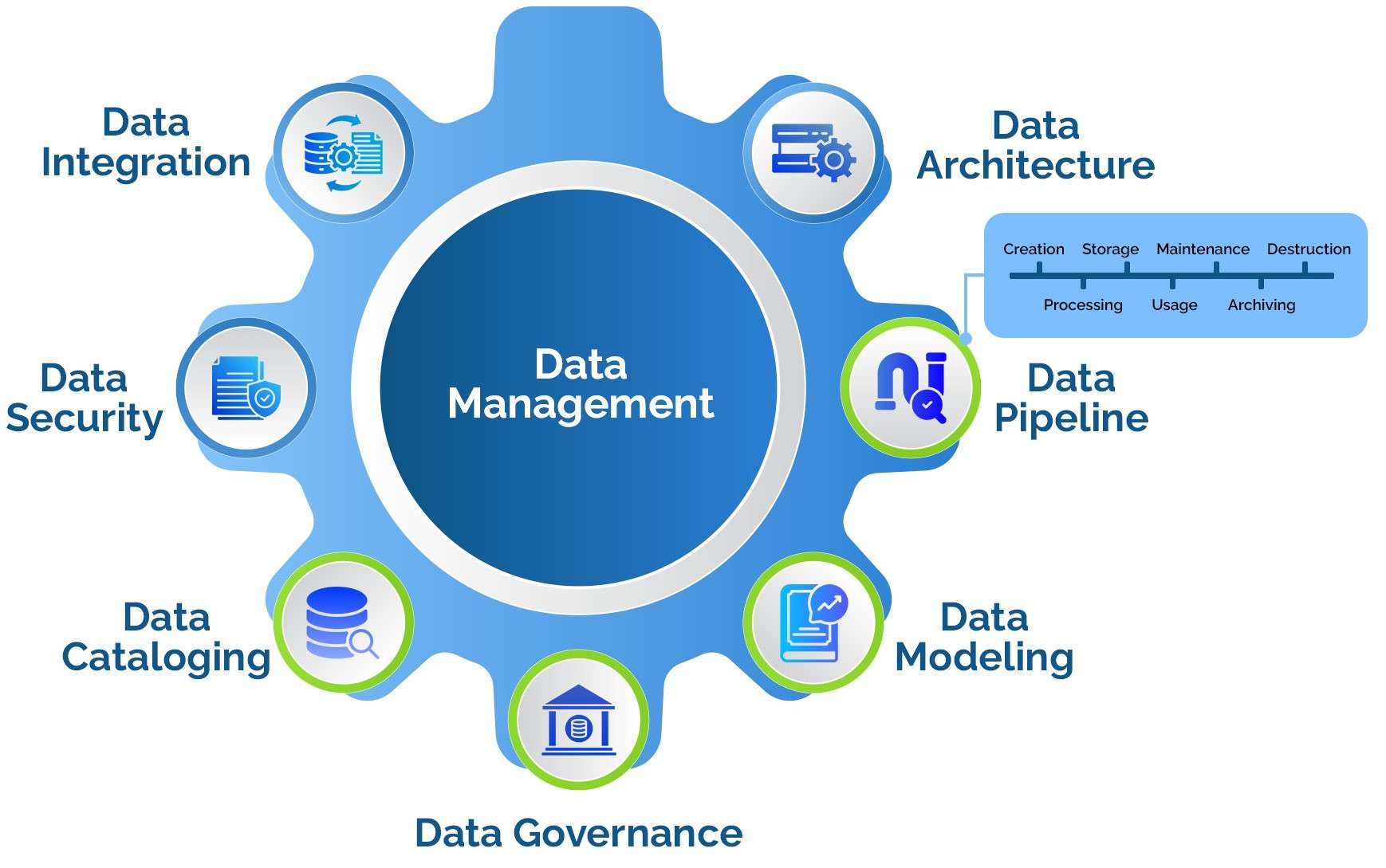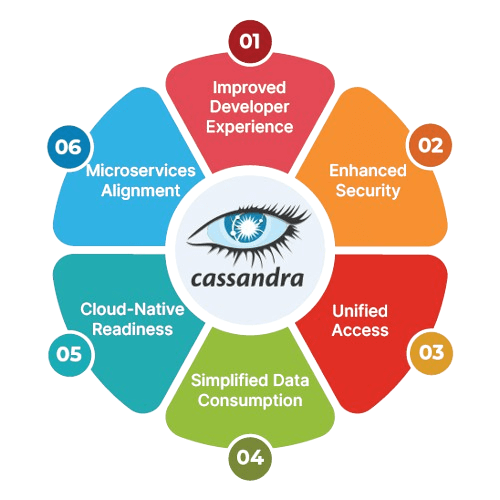
- Introduction to Cassandra and DynamoDB
- Data Model Comparison
- Architecture and Design
- Performance and Scalability
- Query Language: CQL vs. PartiQL
- Read and Write Operations
- Consistency and Availability
- Pricing and Cost Model
Introduction to Cassandra and DynamoDB
In today’s data-driven world, managing large volumes of structured and unstructured data efficiently has become crucial for modern applications, and two popular NoSQL databases, Cassandra and DynamoDB, often come up in this context. Both are designed for scalability, high availability, and low-latency performance, yet they differ significantly in their architecture and design. Apache Cassandra is an open-source, peer-to-peer distributed system known for its robust write performance and on-prem or cloud-deployable nature. In contrast, Amazon’s DynamoDB is a fully managed, serverless database that simplifies operations through automation, making it a top choice for AWS centric solutions.When exploring Cassandra vs DynamoDB, it’s important to consider the trade offs between control and convenience—an essential concept covered in many Database Developer Training programs. Cassandra offers deep customization and independence, while DynamoDB shines in ease of use and seamless integration with other AWS services. Another key factor is AWS DynamoDB pricing, which follows a pay-per-request model and includes features like on-demand capacity and reserved throughput, ideal for variable workloads but potentially costly for consistent, high volume access. Developers and architects must weigh their project needs, scalability expectations, and operational preferences when choosing between the two. Ultimately, understanding the strengths and limitations of both Cassandra and DynamoDB is essential for making the right database decision in a cloud-first world.
Are You Interested in Learning More About Database Certification? Sign Up For Our Database Administration Fundamentals Online Training Today!
Data Model Comparison
- Schema Flexibility: Cassandra NoSQL supports a flexible schema with wide rows, allowing for dynamic columns and efficient handling of large datasets. DynamoDB uses tables, items, and attributes, which resemble a JSON structure but require more planning around partition keys.
- Query Language: Cassandra uses CQL (Cassandra Query Language), which feels similar to SQL, while DynamoDB recently introduced PartiQL, enabling SQL-like queries over structured and semi-structured data.
- Data Relationships: In Cassandra, denormalization and duplication are common practices to ensure fast reads. DynamoDB also favors denormalized models but encourages a single-table design approach for optimized access patterns, which is crucial when understanding What is a Database is and how its structure impacts performance.
When evaluating NoSQL databases, understanding the data model comparison between different systems is essential for making informed architectural choices. Both AWS Cassandra and DynamoDB offer flexible schema designs, but they approach data modeling differently based on use cases, scalability needs, and integration requirements. Here’s a breakdown of key differences and considerations:

- Scaling Strategy: AWS Cassandra (via Amazon Keyspaces) is fully managed and scales based on capacity units, while DynamoDB offers auto-scaling and global tables for seamless multi-region access.
- Cost Model: DynamoDB pricing is based on read/write capacity units or on-demand usage, while Cassandra NoSQL deployments (especially self-hosted) involve infrastructure and maintenance costs, influencing the cost model significantly.
- Use Case Fit: Cassandra suits workloads with high write throughput and complex querying across large datasets. DynamoDB, with PartiQL support and AWS-native services, fits well in serverless or event-driven architectures.
Architecture and Design
When comparing Cassandra vs DynamoDB, one of the most critical areas to understand is their architecture and design, as it directly impacts performance, scalability, and operational complexity. Apache Cassandra follows a peer-to-peer distributed architecture, where each node in the cluster is equal, enabling high availability and fault tolerance without a single point of failure. This design supports horizontal scaling and is ideal for write-heavy workloads. On the other hand, Amazon DynamoDB uses a centralized design with partitioned data managed by AWS, offering automatic sharding, replication, and scaling through a serverless model key concepts to understand when learning What is Apache Cassandra is and how it differs from other database solutions. DynamoDB’s architecture is tightly integrated with the AWS ecosystem, simplifying setup and management but offering less control than Cassandra. The choice between these two often hinges on the trade-offs between customization and convenience. Another factor to consider is AWS DynamoDB pricing, which is based on provisioned or on-demand capacity, with additional costs for features like global tables, backups, and data transfer making cost predictability a vital part of the decision-making process. In contrast, Cassandra’s self-hosted deployments may offer more control over infrastructure costs but require significant operational expertise. Ultimately, understanding the core architecture and design principles behind each database helps teams make better decisions aligned with their technical and budgetary goals.
Are You Interested in Learning More About Database Certification? Sign Up For Our Database Administration Fundamentals Online Training Today!
Performance and Scalability
- Write and Read Performance: Cassandra NoSQL is optimized for high write throughput and handles large volumes of concurrent operations efficiently, thanks to its decentralized, peer-to-peer design. DynamoDB also delivers low-latency reads and writes, especially when configured with DynamoDB Accelerator (DAX) for in-memory caching.
- Horizontal Scalability: Both databases are designed for scale, but Cassandra allows seamless horizontal scaling by adding new nodes. DynamoDB scales automatically without user intervention, ideal for serverless applications. What is Data Modelling plays a crucial role in both systems, as it defines how data is distributed, stored, and accessed efficiently.
- Query Flexibility: Cassandra uses CQL, offering structured queries on wide rows. DynamoDB’s PartiQL enables SQL-like syntax, enhancing query capabilities without changing the underlying data model.
- Impact of Data Model: A proper data model comparison shows that Cassandra’s design supports complex relationships and denormalized structures, while DynamoDB often encourages single-table designs optimized for access patterns.
- Resource Management: DynamoDB simplifies operations with automatic tuning, while AWS Cassandra (Keyspaces) abstracts infrastructure but may limit deep-level customizations.
- Cost Considerations: DynamoDB’s cost model is usage-based, which can be efficient for variable workloads. In contrast, Cassandra requires more hands-on capacity planning but may be more economical at scale depending on infrastructure choices.
- Write Efficiency: Cassandra excels in write-heavy workloads due to its log-structured storage and peer-to-peer architecture, which ensures no single point of failure. DynamoDB also handles writes efficiently, especially with automatic partitioning and write throttling.
- Read Patterns: Cassandra allows fast reads when data is modeled properly, but performance may degrade without proper indexing. DynamoDB offers consistent single-digit millisecond reads, with options like DAX (DynamoDB Accelerator) for caching. A Complete Guide on SQL Optimization Techniques can help enhance query performance and indexing strategies for both systems, ensuring better overall efficiency.
- Replication and Consistency: Cassandra uses tunable consistency levels for both reads and writes, giving developers control. DynamoDB supports strong and eventual consistency but offers fewer options for tuning.
- Latency Handling: Due to its distributed architecture and design, Cassandra can introduce higher latency under heavy read loads. DynamoDB’s managed infrastructure ensures predictable latency, especially for global applications.
- Scalability of Operations: Both scale horizontally, but Cassandra requires manual node management, while DynamoDB scales automatically.
- Cost Considerations: With AWS DynamoDB Pricing, read and write costs are based on provisioned or on-demand capacity, which can be efficient but unpredictable. Cassandra may offer lower costs at scale, but it comes with operational overhead.
Performance and scalability are key factors when choosing a NoSQL database, especially for applications requiring high availability and low-latency access. In this context, evaluating AWS Cassandra and DynamoDB from a performance and scalability perspective reveals important trade-offs in architecture, tuning options, and long-term cost implications. Here’s how they compare:
Query Language: CQL vs. PartiQL
Understanding the differences between CQL and PartiQL is essential for developers choosing between Cassandra NoSQL and DynamoDB. CQL (Cassandra Query Language) is used in both open-source Cassandra and AWS Cassandra (Amazon Keyspaces), offering a familiar, SQL-like syntax tailored for working with wide-column data models. It supports complex filtering, indexing, and batch operations, making it suitable for applications with intricate data relationships. In contrast, PartiQL, introduced by AWS for DynamoDB, brings SQL-style querying to a schemaless environment, simplifying data access across structured and semi-structured datasets. It enables developers to perform common operations like SELECT, INSERT, UPDATE, and DELETE with a minimal learning curve. While PartiQL enhances usability, it operates within DynamoDB’s constraints on query flexibility and access patterns concepts that are thoroughly explored in Database Administration Fundamentals Online Training to help you better navigate such limitations. A closer data model comparison reveals that CQL enables more powerful queries across multiple partitions when properly indexed, whereas PartiQL prioritizes performance and simplicity. In terms of the cost model, PartiQL queries, especially those involving scans or secondary indexes, can lead to higher charges in DynamoDB. CQL-based queries, meanwhile, are more predictable in cost but depend on how well the infrastructure is managed. Ultimately, the choice between CQL and PartiQL depends on the complexity of data requirements, desired control, and integration within a cloud-native or hybrid architecture.

Read and Write Operations
Understanding read and write operations is critical for choosing the right database solution, especially when performance, scalability, and cost are top priorities. In the debate of Cassandra vs DynamoDB, both databases offer high availability and low-latency operations but differ significantly in how they manage reads and writes due to differences in their architecture and design. Here’s a breakdown:
Consistency and Availability
Consistency and availability are fundamental pillars of distributed databases, and analyzing Cassandra vs DynamoDB reveals how each system approaches the balance between them. Cassandra follows the principles of the CAP theorem by prioritizing availability and partition tolerance, offering tunable consistency where developers can configure the level of consistency required for each operation. This flexibility allows teams to strike the right balance based on specific application needs, especially in globally distributed systems. Understanding Types of SQL Indexes can play a crucial role in optimizing query performance. By choosing the right type of index such as B-tree, hash, or full-text teams can fine-tune their database to meet the demands of various workloads and ensure efficient data retrieval in large, distributed environments. In contrast, DynamoDB emphasizes strong consistency by default for single-region setups, with eventual consistency as a configurable option. Its architecture and design ensure high availability through automatic data replication and failover mechanisms, all managed by AWS behind the scenes. Cassandra’s peer-to-peer architecture also ensures high availability, even during node failures, but requires manual oversight to maintain performance. From a cost perspective, DynamoDB’s managed consistency comes at a price; features like global tables and strongly consistent reads can increase charges under the AWS DynamoDB Pricing model. Cassandra’s open-source nature gives more control over infrastructure and cost but demands greater operational responsibility. Choosing between the two depends on whether flexibility in consistency settings or simplified management with predictable high availability aligns better with your technical goals and team capabilities.
Are You Preparing for Database Developer Jobs? Check Out ACTE’s DBMS Interview Questions and Answers to Boost Your Preparation!
Pricing and Cost Model
When evaluating pricing and cost models, it’s important to consider how the underlying architecture influences overall expenses, especially with databases like Cassandra NoSQL and DynamoDB. A key data model comparison reveals that AWS Cassandra (via Amazon Keyspaces) and DynamoDB adopt different approaches. Cassandra, an open-source NoSQL database, generally offers a more predictable cost structure for on-premises deployments, where you control the hardware and scaling. However, operational costs such as server management, storage, and maintenance can add up. In contrast, DynamoDB’s pricing is based on a pay-per-request model, which charges for read and write capacity units, data transfer, and storage, making it more suitable for variable workloads. This cost model can quickly become expensive with high-frequency access patterns or if you use advanced features like global tables or secondary indexes—a topic often discussed in Database Administration Fundamentals Online Training to help manage such complexities. DynamoDB also offers PartiQL, which simplifies querying and can reduce the need for complex operational tuning, but it may incur additional charges depending on the operations used. While AWS Cassandra is fully managed, it still requires careful planning to optimize costs based on workloads. Both databases offer scalability, but careful consideration of the pricing structure based on usage patterns is essential to avoid unexpected costs, especially when scaling.


